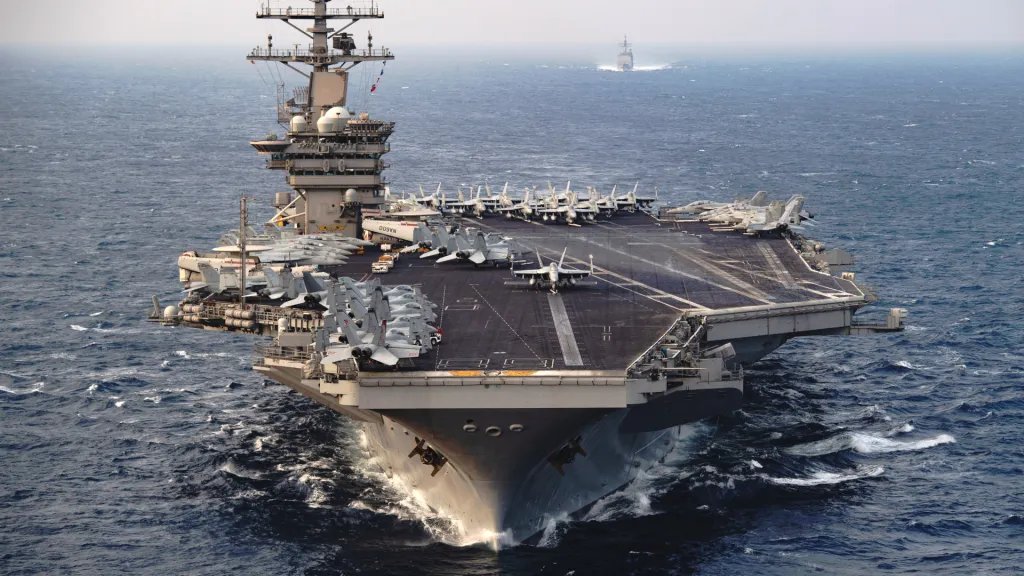U.S. President Donald Trump has suggested that contaminated fuel may have been a factor in the U.S. Navy’s loss of an MH-60R Seahawk helicopter and an F/A-18F Super Hornet in the South China Sea on Sunday. In a very strange chain of events, the two aircraft, both assigned to the supercarrier USS Nimitz, went down within 30 minutes of each other while on separate missions. The crews of the Seahawk and the Super Hornet were both safely retrieved.
“They’re gonna let me know pretty soon,” Trump told reporters while flying aboard Air Force One on Monday. “I think they should be able to find out. It could be bad fuel. I mean, it’s possible it’s bad fuel. Very unusual that that would happen.”
Asked whether he thought “foul play” led to the crashes, Trump said “I don’t think so,” and reiterated his contaminated fuel theory.
“We don’t believe it was anything nefarious,” a U.S. Navy official told The War Zone.

U.S. Pacific Fleet (PACFLEET), which oversees naval operations in the South China Sea region, declined to comment on Trump’s statements about the crashes and referred us to the White House. We have yet to receive a response and will update this story with any pertinent information provided.
The first of the two mishaps occurred about 2:45 PM local time, according to PACFLEET.
That’s when the Seahawk, assigned to the “Battle Cats” of Helicopter Maritime Strike Squadron 73 (HSM-73), “went down in the waters of the South China Sea while conducting routine operations from” the Nimitz, a PACFLEET release stated. “Search and rescue assets assigned to Carrier Strike Group 11 safely recovered all three crew members.”

A half hour later, an F/A-18F Super Hornet fighter assigned to the “Fighting Redcocks” of Strike Fighter Squadron 22 (VFA-22) “also went down in the waters of the South China Sea while conducting routine operations from Nimitz,” PACFLEET announced. “Both crew members successfully ejected and were also safely recovered by search and rescue assets assigned to Carrier Strike Group 11. All personnel involved are safe and in stable condition. The cause of both incidents is currently under investigation.”

While the particular circumstances of the recent mishaps in the South China Sea remain under investigation, fuel contaminated with water and/or other foreign substances, or that otherwise falls below specifications, can present serious problems for aircraft, including causing engines to fail in flight. Checking fuel quality is a common part of an investigation following any aviation mishap, military or civilian.
In addition, carrier-based aviation operations present unique conditions when it comes to the transfer of fuel, both into storage tanks on the ship to begin with, which can occur while the carrier is underway at sea, as well as in port, and then into aircraft. Personnel aboard all Navy carriers perform regular fuel quality checks at multiple steps in the fuel distribution process.

Trump’s comments about the mishaps came as the President is traveling throughout Asia. He is scheduled to have a meeting on Thursday with Chinese leader Xi Jinping to discuss trade issues.
Nimitz, the Navy’s oldest carrier, is on its final cruise before its planned decommissioning next year. The flattop is currently in the process of returning to its home port in Naval Base Kitsap in Washington State after having been deployed to the Middle East for most of the summer, primarily as part of the U.S. response to attacks by Yemen’s Houthi rebels on commercial shipping.

Also known by its hull number CVN-68, the Nimitz, which was first commissioned into service in 1975, is the lead ship in its class. The vessel’s design built on the Navy’s prior experience with its pioneering nuclear-powered supercarrier, the one-of-a-kind USS Enterprise (CVN-65), which served from 1961 to 2012.
The Navy began preparing for the Nimitz’s demise in 2023, which you can read more about here. The Newport News Shipbuilding division of Huntington Ingalls Industries has received multiple contracts already to begin laying the groundwork for removing the nuclear fuel from the carrier’s reactors and other aspects of the disposal process.
Whether contaminated fuel turns out to be a factor in, or even the root cause of the Seahawk and Super Hornet going down in the South China Sea, remains to be seen. U.S. military aviation accidents typically take weeks if not months to complete.
Contact the author: [email protected]
